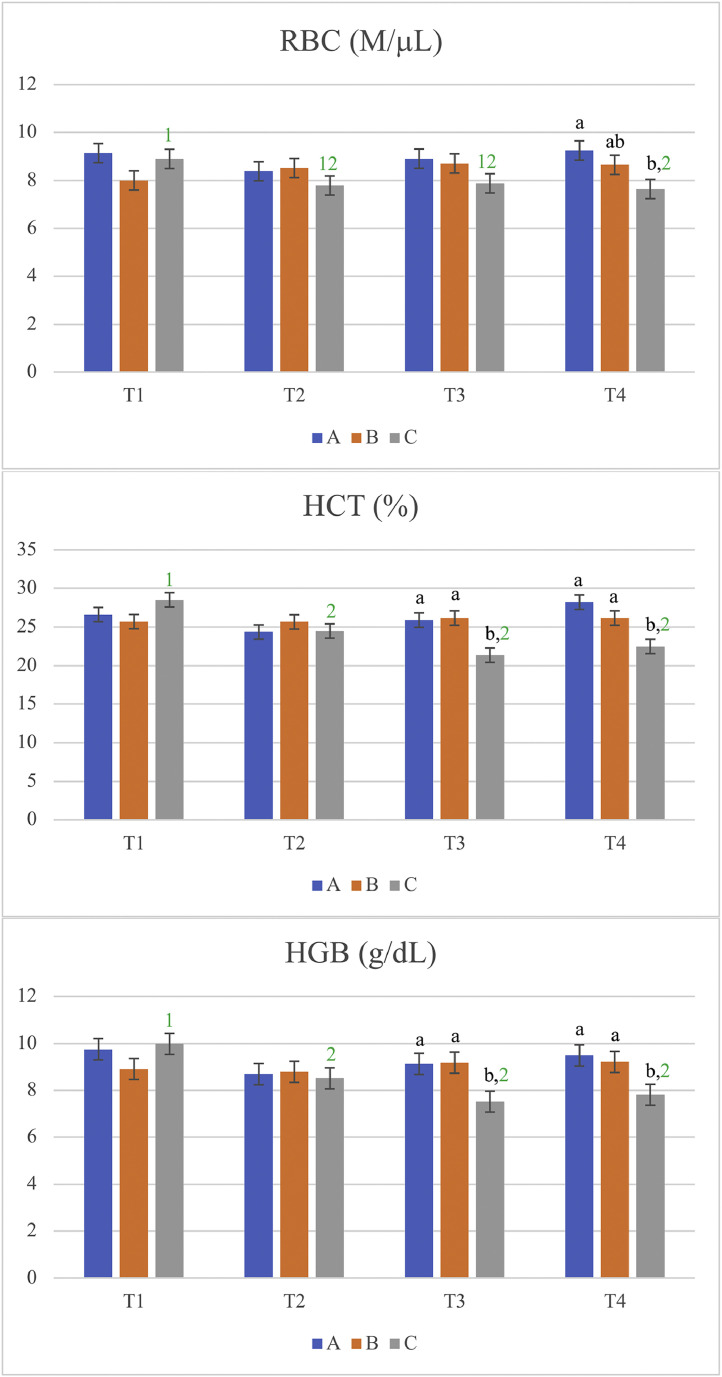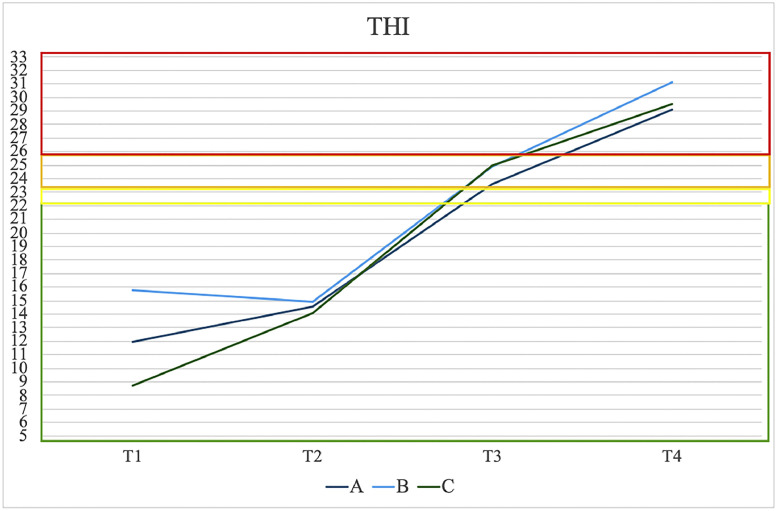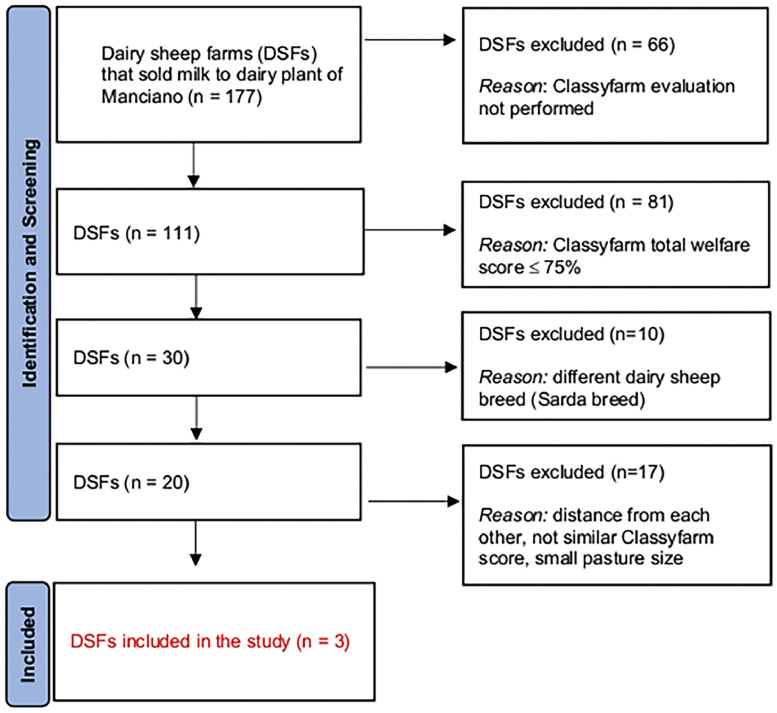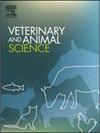不同牧场管理和热应激风险对泌乳奶羊血液学和血液化学参数的影响:一项纵向研究
IF 1.9
Q2 AGRICULTURE, DAIRY & ANIMAL SCIENCE
引用次数: 0
摘要
意大利的绵羊暴露于热应激(HS)数月,增加了与HS相关的问题的风险,如生长、繁殖性能、产奶量和质量以及天然免疫力的下降。本研究旨在评估三个不同牧场管理的奶羊血液学和生化参数的变化:A(无水无荫),B(有水但无荫)和C(既有水也有荫)。在HS高发的3 - 6月,每个养殖场每月采集20只羊的血液(T1-T4)样本,共60只。血液参数包括红细胞(RBC)、红细胞压积(HCT)、血红蛋白(HGB)、尿素、肌酐和总蛋白(TP)。采用混合线性模型分析了HS和管理对这些参数的影响。利用采样日的温湿指数(THI)将热应激分为“无高温”、“中等高温”、“严重高温”和“极端高温”。T3时出现严重HS, T4时出现极端HS。在T4时,A的红细胞水平明显高于C。T3和T4时,A和B的HCT和HGB水平明显高于C。T1和T3时,A和B的尿素水平高于C, T2时,A高于B和C, T4时,DSF B高于C。总磷浓度在不同的农场和时间之间存在差异,在T1 (B vs C)、T2 (A vs B;C), T3 (A vs B vs C), T4 (A vs B;C).这些结果表明,牧场管理可能会影响HS条件下放牧奶羊的血液和生化参数,这些参数可能作为实施放牧奶羊健康福利监测的工具。在炎热的气候中,提供阴凉和水可以改善羊的健康。本文章由计算机程序翻译,如有差异,请以英文原文为准。



Changes in hematological and hematochemical parameters in lactating dairy sheep according to different pasture management and heat stress risk: A longitudinal study
Sheep in Italy are exposed to heat stress (HS) for several months, increasing the risk of HS-related problems such as the decrease in growth, reproductive performance, milk quantity and quality and natural immunity. This study aimed to assess changes in hematological and biochemical parameters in dairy sheep from three different farms with varying pasture management: A (no water or shade), B (water but no shade), and C (both water and shade). From March to June, when HS risk is high, monthly blood samples (T1-T4) were collected from 20 sheep per farm (total n = 60). Blood parameters included red blood cells (RBC), hematocrit (HCT), hemoglobin (HGB), urea, creatinine, and total protein (TP). The impact of HS and management on these parameters was analyzed using a mixed linear model. Heat stress was classified using temperature-humidity index (THI) evaluated in the sampling day in “no HS”, “moderate HS”, “severe HS” or “extreme HS”. Severe HS was observed at T3 and extreme HS at T4. At T4, RBC levels were significantly higher in A compared to C. Both HCT and HGB levels at T3 and T4 were significantly higher in A and B compared to C. Urea levels were higher in A and B compared to C at T1 and T3, in A compared to B and C at T2, and in DSF B compared to C at T4. TP concentrations varied between farms and over time, with significant differences at T1 (B vs C), T2 (A vs B; C), T3 (A vs B vs C), and T4 (A vs B; C). These findings suggest that pasture management may influence blood and biochemical parameters under HS condition, and they could potentially be used as a tool for implementing health and welfare monitoring of grazing dairy sheep. Providing shade and water may improve sheep health in hot climates.
求助全文
通过发布文献求助,成功后即可免费获取论文全文。
去求助
来源期刊

Veterinary and Animal Science
Veterinary-Veterinary (all)
CiteScore
3.50
自引率
0.00%
发文量
43
审稿时长
47 days
 求助内容:
求助内容: 应助结果提醒方式:
应助结果提醒方式:


